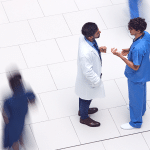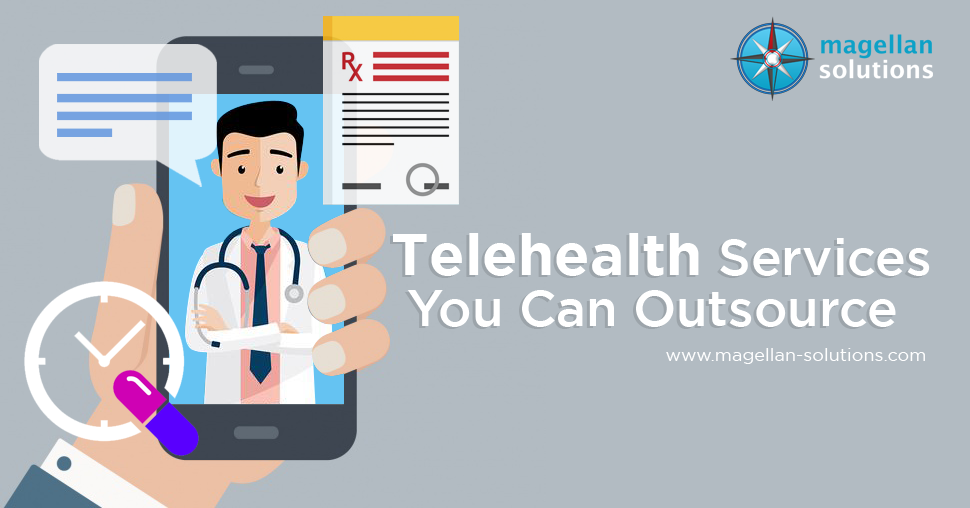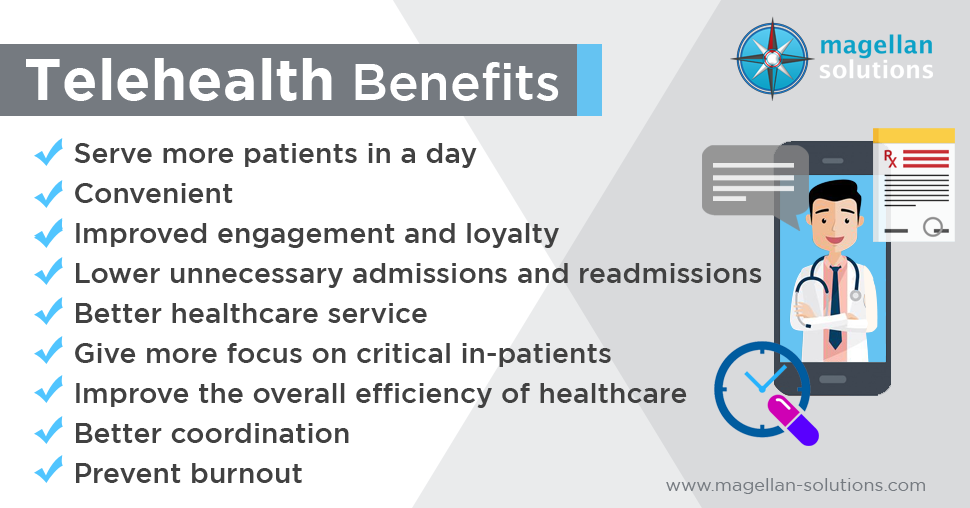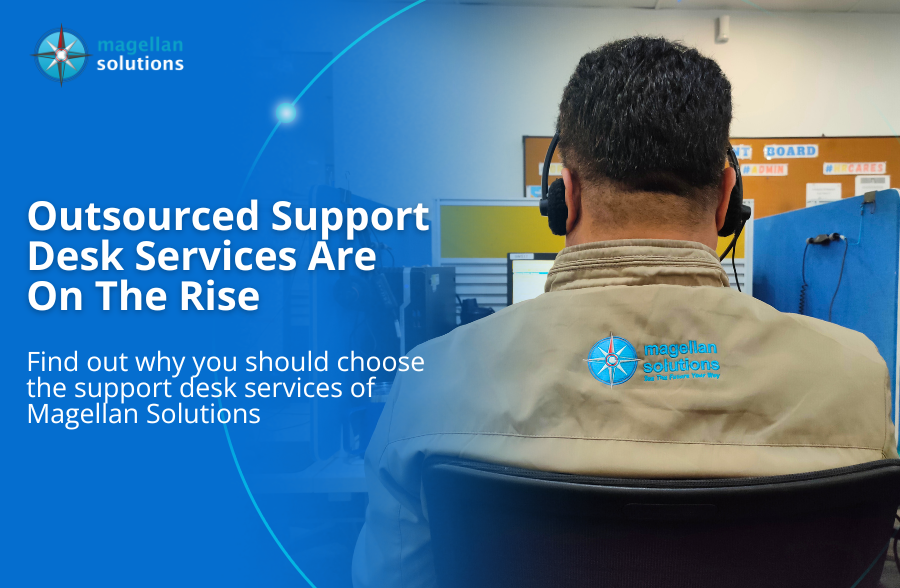Schedule a FREE call with our outsourcing expert now and get a precise quotation that meets your requirements. Don't wait - get started today!
Telehealth services gained overnight popularity as soon as the pandemic took over. As a result, social distancing was imposed, and people were encouraged to stay at home. Hospitals also limited their operations to essential visits and procedures to protect staff and contain the virus’s transmission.
Telehealth, a service that wasn’t widely known before the pandemic, became essential in delivering continuous healthcare to people who don’t need immediate medical treatment. Different states in the U.S., including Alabama, Kentucky, and Michigan, have already implemented a Telehealth expansion bill. There is no wonder why it might become a big part of the “new normal.”
However, this surge left some healthcare institutions struggling to meet the demands.
Not all doctors and nurses have sufficient training in Telehealth. The concept of virtual consultations and medication sounds new to many patients. Even the technology isn’t well-developed yet to maintain a smooth operation.
To stay ahead in providing quality healthcare, seeking the help of a reliable service provider becomes an option. This article discusses the following information:
What is Telehealth Services?
Telehealth services refer to various remote clinical services, from telemedicine to remote patient monitoring. It also includes non-clinical services such as medical education, provider training, and administrative meetings.
It aims to enhance patient care and health information service delivery through virtual means. Medical practitioners commonly use digital and telecommunications technologies to connect with their patients. Telehealth is a great help to people who belong to the older population or have mobility issues. People with chronic diseases can also use Telehealth to monitor their conditions and connect with their doctors. Moreover, it resolves healthcare inaccessibility for those who live in rural areas.
Knowing its etiquette and coverage policies is essential to get the most out of this service.
With Telehealth services, long-distance clinical health care, self-management, and remote diagnosis have become a reality.
List of Telehealth Services
Hospitals already provide several Telehealth services on a small scale. However, as the need for remote healthcare keeps increasing, the list has grown longer. Below are the standard services offered by the majority of healthcare institutions.
Telemedicine
Telemedicine refers to the remote diagnosis and treatment of patients using telecommunications technology. The clinical services under telemedicine include video consultations, digital transmission of medical imaging, and remote medical diagnosis and evaluations. It requires a direct line between a care provider and the patient. The most common channels used for this service are phone calls, text messages, and video chat.
Telepsychiatry
Telepsychiatry involves video chats, SMS, and inbound phone calls to deliver convenient and affordable mental health services. It is an alternative solution for patients who can’t go to actual therapy due to school activities or work demands. It also offers a readily accessible service to individuals experiencing anxiety, depression, and other mental health conditions due to self-isolation.
Telehealth Physical Therapy
Telehealth physical therapy, or telePT, refers to the remote execution of physical therapy sessions. Unlike telemedicine and telepsychiatry, telePT requires a video-audio channel to carry out the entire session effectively. The physical therapist needs to see the patient’s movement based on the exercises.
Standard select services include geriatric physical therapy, neurological physical therapy, chronic pain management, postoperative care, and cancer rehabilitation.
Telehealth Nursing
With Telehealth, nurses deliver care and monitor patient conditions using mobile devices, remote patient monitoring tools, telephones, or computers. It is similar to how nurses function in person rather than performing their duties from another location.
During this pandemic, hospitals also use this service to limit nurse-patient interactions. Instead of visiting the room every time, nurses need to look at a monitoring platform. Through this service, hospitals can alleviate their lack of workforce.
Patient Portal
An online patient portal is a more secure way to transfer sensitive medical information. A well-developed portal offers convenience in communicating with patients, reviewing test results, scheduling appointments, and getting prescriptions.
Virtual Appointments
Some providers offer medical appointment services to facilitate faster and smoother consultations. Patients can call or chat with a virtual receptionist to make this happen. Meanwhile, healthcare professionals can ask their personnel to contact their patients to remind them of their schedules. Patients with a portal or an app can use the web-based service to set an appointment if they prefer the self-service method. Virtual meetings are generally for minor illnesses that don’t require an in-person visit.
Telemonitoring
Telemonitoring, or remote patient monitoring, does not involve direct interaction between a healthcare team and a patient. Doctors or nurses can use monitoring devices to examine a patient’s data.
Management of Personal Health Records (PHR)
As the number of individuals utilizing Telehealth increases, so does the amount of data being registered in the system. To prevent inaccuracies, some providers offer data management solutions to assist hospitals in organizing their PHR database. A well-managed personal health records system enables emergency personnel to access accurate information quickly.
Telehealth Support
Telehealth support services aim to assist patients experiencing technical difficulties with the app or platform they’re using. Medical providers can use this to facilitate short training, especially for older people who lack technological know-how.
Taking the time to teach patients how to use a health system is crucial for its success. If they don’t understand how it works, they will likely return to the traditional healthcare version after the pandemic. However, if they experience how convenient this service is by learning to navigate the different platforms, its growth will continue even after the lockdown.
Development of Personal Health Apps
Several tools are available online that healthcare facilities can readily use. However, those who want to develop a tool unique to their organization can contract a third party to create it.
Medical Billing
Medical billing is an essential part of the healthcare industry. It ensures the financial security of a hospital or clinic, enabling it to continue providing quality care.
Hiring a virtual team can aid the in-house medical team in processing claims, especially when there’s an influx of patients daily.
Here are the other clinical and non-clinical services under Telehealth:
-
-
- Teledentistry
- Group psychotherapy
- Psychophysiological therapy
- Speech/hearing therapy
- Eye examination
- Clinician training
- Consumer education
- Continuing medical education
- Self-care management training
- Wheelchair management training
-
Different Types of Telehealth Delivery
Telehealth services rely on technology to provide remote health care and education. Despite its limitations and lack of direct personal touch, it contributes enormously to maintaining human connections.
Over the years, it has moved from phone calls to more advanced technologies.
mHealth
mHealth, or mobile health, uses mobile devices for medical and public health administration, including mobile apps and programs. According to the World Health Administration (WHO), mHealth “involves the use and capitalization of a mobile phone’s core utility of voice and SMS as well as more complex functionalities and applications including GPRS, 3G and 4G systems, GPS, and Bluetooth technology”.
Patients can use various mHealth applications to set medication and appointment reminders, track health measurements, and share information with medical professionals. mHealth gives patients more liberty and control in managing their health.
Video Conferencing
Videoconferencing uses real-time video communication platforms to diagnose and prescribe medical treatments for patients at remote locations. Medical professionals can also use it for consultations with fellow healthcare workers, medical staff education and training, and business functions.
Its primary system components include codec, camera, input devices such as medical scopes and document scanners, viewing monitor, interaction devices like mouse and keyboard, and output and storage devices.
Remote Patient Monitoring
Remote patient monitoring (RPM) is a technology that enables the monitoring of patients outside the conventional healthcare setting. Digital technologies are used for the secured collection, transmission, evaluation, and reporting of a patient’s health data from one place to another. The use of RPM after a patient goes home from a healthcare facility reduces readmission rates.
Store-and-Forward
Store-and-forward technologies are used for the asynchronous transmission of medical information. This delivery method doesn’t require a direct and real-time connection between the source and the destination nodes. It involves communication tools such as secure email. Some data that can be transferred using the store-and-forward approach include MRIs, X-rays, text-based patient data, photos, and pre-recorded video exam clips.
Store-and-forward decreases the wait times for specialty care, increases convenience for both parties, and improves healthcare delivery, especially for people living far away.
This delivery method is standard in radiology, pathology, dermatology, and ophthalmology.
Benefits and Limitations of Telehealth
Due to the support it receives from the government, the benefits associated with telehealth have increased. When you incorporate it into your medical practice, you can continue serving new and returning patients even if they can’t visit the hospital or clinic. However, knowing the limitations of offering this service is essential to maximize its full capability. This can help you prepare a solid plan to package and provide this service for your patients.
Benefits of Telehealth
Serve more patients in a day.
With the presence of RPM tools, you can monitor the condition of your patients simultaneously. Video consultations also save you and your patients time because they remove the need to travel.
Convenient
As long as both parties have a stable internet connection and reliable devices, it is a convenient way to bring healthcare closer to your patients.
Improved engagement and loyalty
Thanks to interactive telecommunication channels, you can talk with your patients as if they are in your office.
Lower unnecessary admissions and readmissions
When patients can manage their health conditions at home, they prefer to stay there instead of going to a hospital.
Better healthcare service
Telehealth offers patients faster access to specialists to evaluate their conditions and illnesses. Meanwhile, giving patients more control of their well-being empowers them to take charge of their health.
Give more focus on critical in-patients.
Patients with more severe conditions can receive more attention from healthcare personnel.
Improve the overall efficiency of healthcare.
Reducing the number of unnecessary admissions, readmissions, and transfers decreases a hospital or clinic’s costs. Setting appointments faster through digital means instead of manually calling a doctor’s office contributes to its efficiency.
Better coordination
Get connected with other specialists in the industry.
Prevent burnout
Minimizing in-person visits for non-emergency concerns frees up time for medical professionals.
Limitations of Telehealth
Internet connectivity issues
The lack of access to high-speed broadband internet limits the full implementation of Telehealth programs in rural areas. A slow internet connection can lead to video buffers, which can cause patient dissatisfaction.
Technically-challenged staff and patients
Before the outbreak, Telehealth remained a small-scale operation. Many hospital staff lack sufficient knowledge about the technologies and policies. The same goes for patients, particularly those who don’t use much technology daily. Providing training is the fastest way to get through this dilemma.
Confidentiality of information
Transferring sensitive patient data is unavoidable. Some patients are concerned with information leakage, which might prevent them from disclosing helpful details during a consultation. Using a secured communication channel or partnering with a HIPAA-certified service provider can boost patients’ confidence in Telehealth.
Fragmented care
The improper utilization of Telehealth services can lead to fragmentation of care. This happens when various healthcare providers fail to work together. To prevent this, different providers need to use an integrated delivery system that they can use to maintain an organized, coordinated, and collaborative network.
Outsourcing Telehealth Services
Let’s get things straight: outsourcing doesn’t mean you can transfer any Telehealth services to a third party. In this industry, you need complete oversight of how things are going. As much as possible, you should keep your primary clinical services in-house. Patients’ health comes above all.
So, what can you outsource?
Remember the non-clinical Telehealth services discussed earlier? It’s better to stick with those first, especially when you’re new to Telehealth and outsourcing.
You can use a call center to assist patients in navigating an app or tool by providing short product training. Some providers also offer software development services specifically for healthcare. Those who need support in processing technical patient data can count on the service of licensed nurses who work in the BPO setup. Outsourcing is also helpful in managing appointments and schedules.
Outsourcing part of your Telehealth allows you to manage the influx of patients who want to try this service. This can prevent your team from being overwhelmed and exhausted. Outsourcing some services is also a more cost-effective way of implementing Telehealth services. Instead of investing heavily in infrastructure for non-clinical services, you can use a huge chunk of your budget to develop and improve your core services.
Choosing a Telehealth Service Provider
It is easy to find a service provider, but choosing which one you should partner with can be challenging. To make outsourcing work for you, you must pick a service provider that can work well on your terms without hurting your budget.
Here are some of the non-negotiable elements you should look for in a service provider:
HIPAA certification
Before asking anything else, find out if the company has a HIPAA certification to ensure its credibility and the security of your patients’ sensitive personal and health information.
Appropriate technology and infrastructure
Look into the availability of technology and infrastructure needed for the service you plan to outsource. This translates to faster onboarding of your Telehealth account, quickly providing your needed assistance.
Proven track record
Choose a company with several years of experience in the healthcare industry. Assess the efficacy of the projects they have handled in the past. This can help you determine if the company is worthy of consideration.
Value for money
When you outsource, your reputation is on the line. Choose a service provider that can guarantee high-quality services at a reasonable price.
Quality control measures
Find out the provider’s ability to maintain the quality of its service delivery and whether quality monitoring procedures are in place. This will ensure you won’t receive substandard service in the future.
How Much Do Telehealth Services Cost?
The cost of a Telehealth service depends on what you plan to outsource. Given its unique requirements and goals, it varies from one service to another.
In general, here are some factors that affect the price:
- The service you need
- Length of contract
- Number of staff needed
- Any add-ons (e.g., business continuity options)
It is still best to talk directly with a company representative to give you a quotation.
Telehealth as Part of the New Normal
The only direction to attain success is the way forward. Taking a step back is suitable for assessing the current situation, but you might get stuck if you’re unwilling to take two or more steps ahead.
Telehealth opens another door to improve the way we deliver and receive healthcare. It is not perfect, but it is already good enough to help us overcome these trying times. With proper implementation and readiness to accept this idea of healthcare, Telehealth can become an integral part of the new normal.
And you don’t have to take this way alone. You can always share the burden and the risks with a trusted partner.
When you’re ready to explore this territory, call us. We’ll see how we can help.

















